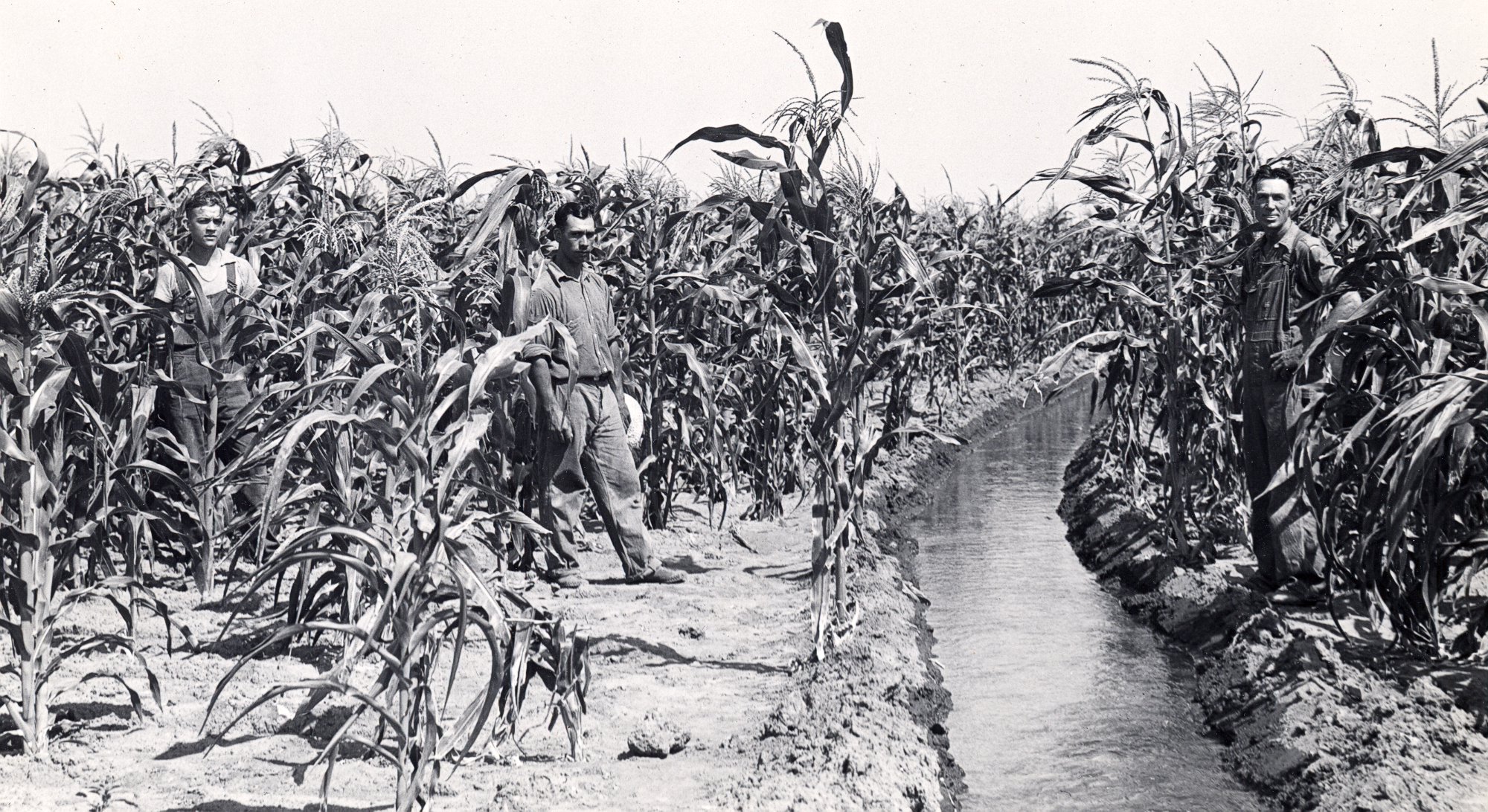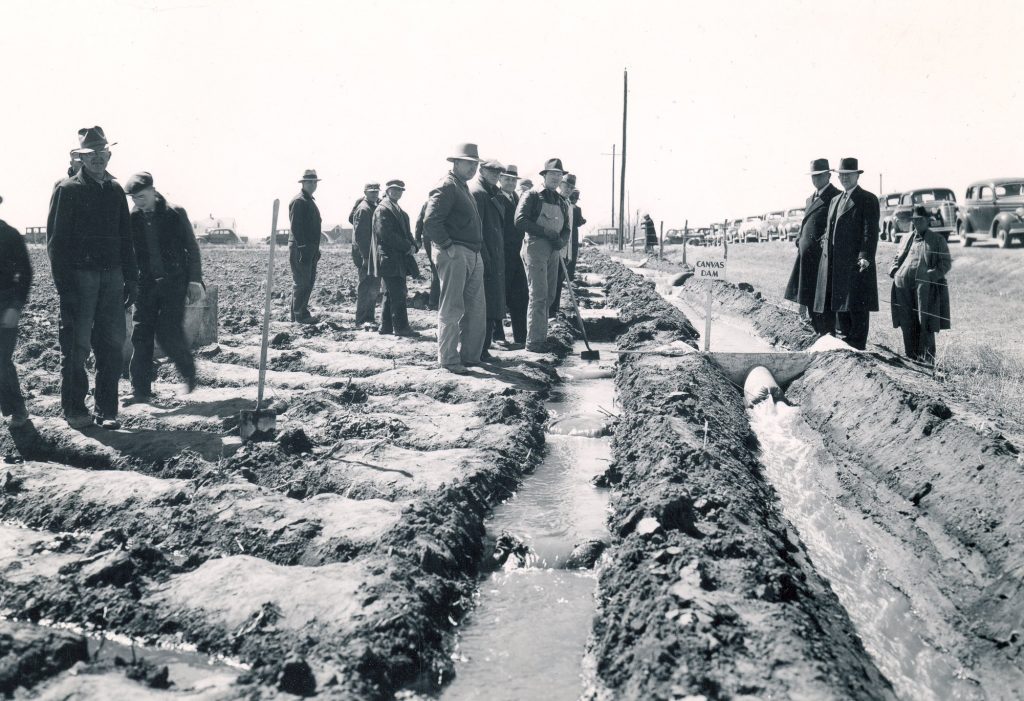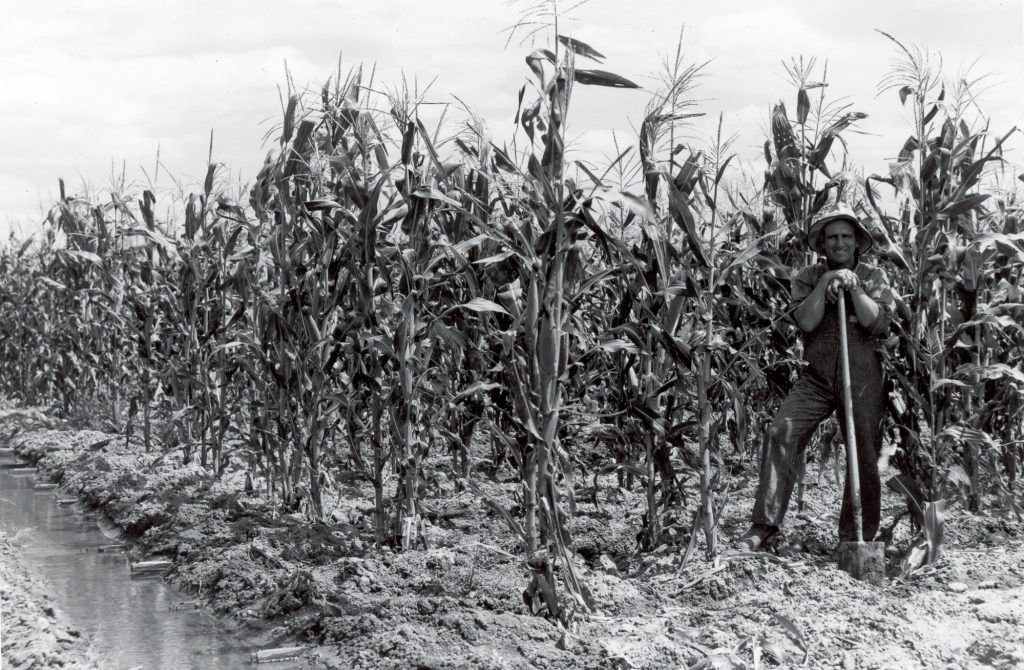Central marks 75th anniversary of irrigation deliveries from Lake McConaughy

It was 1942. Kingsley Dam had been closed the preceding year and Lake McConaughy was just beginning to fill. In just under a year and a half, almost 840,000 acre-feet of water had been stored behind the dam.
This summer Central will reach a milestone: 75 years of delivering storage water from Lake McConaughy through its canal system. In the irrigation service area (Gosper, Phelps and Kearney counties), farmers on almost 45,000 acres had signed contracts with Central for delivery of irrigation water.
Although Central had been bringing water to the area since the spring of 1938 from a temporary diversion point on the Platte River east of Lexington, the deliveries were limited to about 3,300 acres near the river and functioned mostly as an opportunity for area farmers to learn how to best utilize water on their fields.
Central sponsored demonstration days to show irrigation equipment and practices. One such “irrigation school” of note was conducted on April 28-29, 1938 by Ivan Wood, an irrigation specialist from the University of Nebraska Agricultural College’s Extension Service. Held at the Henry Peterson farm eight miles northwest of Holdrege, the school attracted an estimated 10,000 people over two days. Wood demonstrated various instruments for leveling ground, making farm laterals, the use of canvas dams or light, steel dams for shutting off water or raising water levels in a lateral, the use of homemade lath box turnouts and how to distribute water over the field in the most practical manner.

Irrigation demonstration: Central District customers learned how to best use the newly arrived irrigation water on their farms. The first “irrigation schools” were held in 1938 on Phelps County farms and continued through the early years of the canals’ operations.
Corn yields jumped from an average of 28 bu./acre in the 1920s to more than 100 bu./acre on irrigated ground under improved farming practices during the 1940s. The ability to irrigate was probably the most significant factor in increasing yields and producing a crop every year, even during dry periods.
But in 1942, there remained some uncertainty about how beneficial – and necessary — these new canals would be. Most of the area had received decent rainfall during May and June, but – as often happens in Nebraska — July and August turned out to be hot and dry. The new irrigation canals bringing water to the area proved to be a blessing for those who had delivery service contracts with Central. Success bred success and by the end of the decade, the number of acres under irrigation doubled as more producers saw the advantages of irrigation.

A Central irrigation customer stands next to his farm lateral — equipped with wooden lath boxes through which water flowed from farm lateral to furrow (lower left corner) — and smiles at the good fortune of being able to irrigate his crops.
One such farmer was Laverne Johnson, who had started farming in the 1930s, right in the middle of one of the most brutal droughts Nebraska has ever experienced. Johnson, who years later would serve two terms on Central’s board of directors, had been a supporter of the irrigation project during the struggle to gain approval and funds to build the project. But from his perspective, he didn’t know if the project would be built in time to save him from ruin.
In the early 1990s, he recalled the difficulties he experienced during his first years of farming and the elation of seeing irrigation water come to his farm.
He explained that he was nearing the breaking point in the late ‘30s, having experienced crop failures and poor harvests time and again because of the lack of rainfall.
“I was almost to the point that I had to start thinking about another way to make a living, because I was just hanging on by my fingernails,” he said. “I was excited when I learned that the project had been approved and would soon be built, but I still didn’t know if I’d be able to keep farming long enough for the water to get to me.”
Then he emotionally recalled the moment after the canals had been completed and he first saw water making its way down to his fields.
“I just dropped to my knees,” he said, “and cried like a baby because I knew at that point everything was going to be all right.”
And it was. Over the years, Johnson would expand his farming operation, putting the additional acres under irrigation from the canals and later from wells as the groundwater table beneath the area began to rise because of recharge from the canal system.
Laverne passed away in 2001, but today the farm that he thought he was going to lose remains in his family largely because of the reliable source of water in Lake McConaughy that enabled him, and many others like him, to prosper instead of being driven from the land by the whims of nature.
Leave a Reply